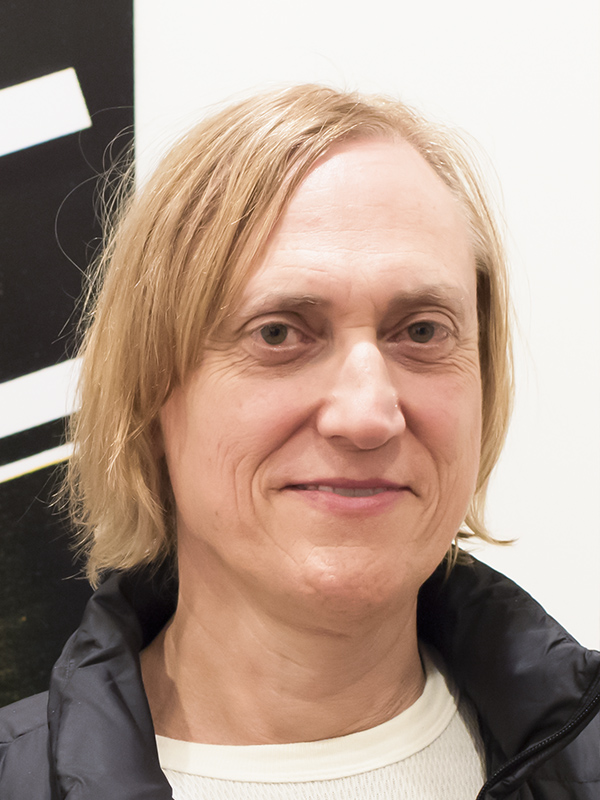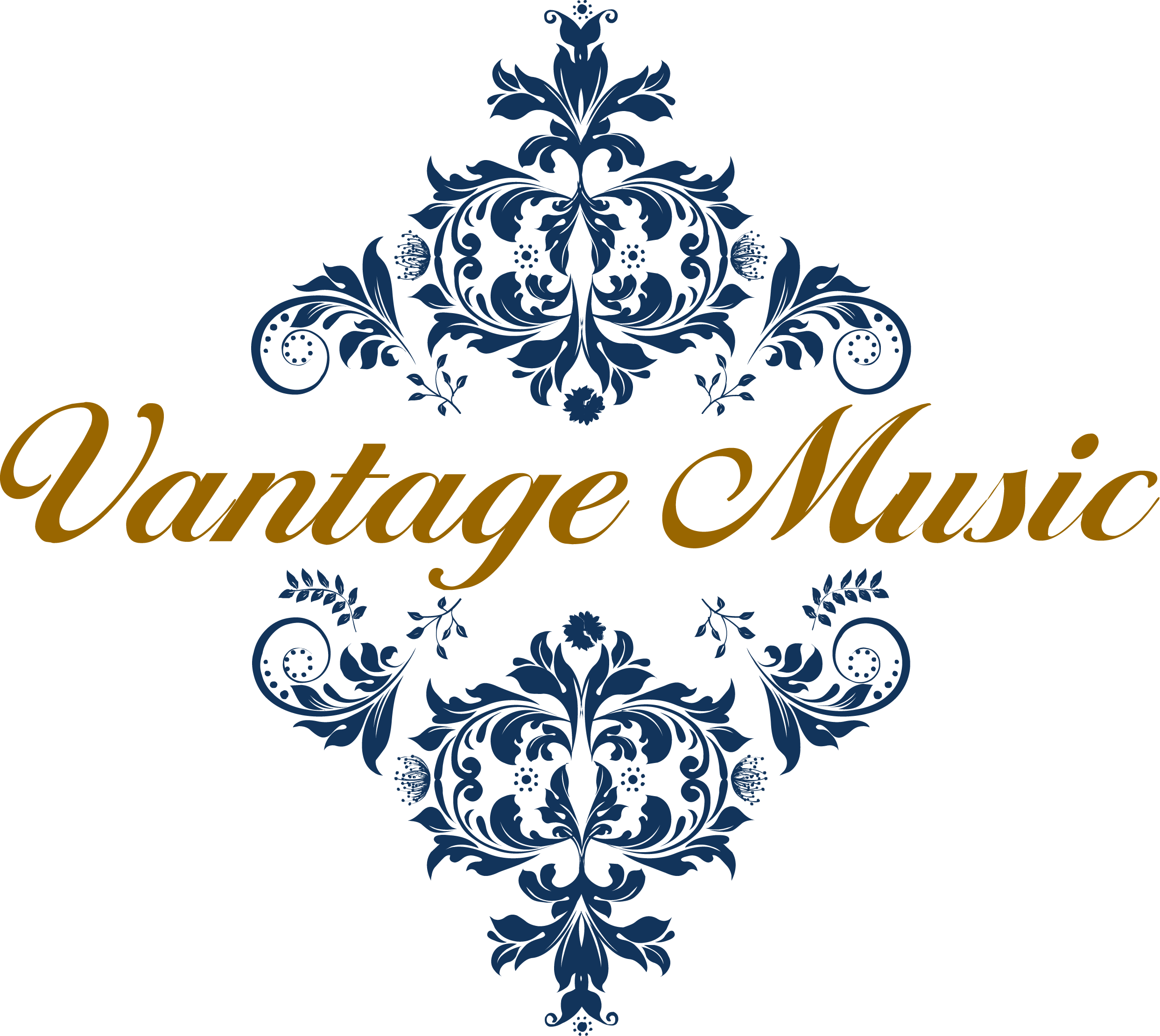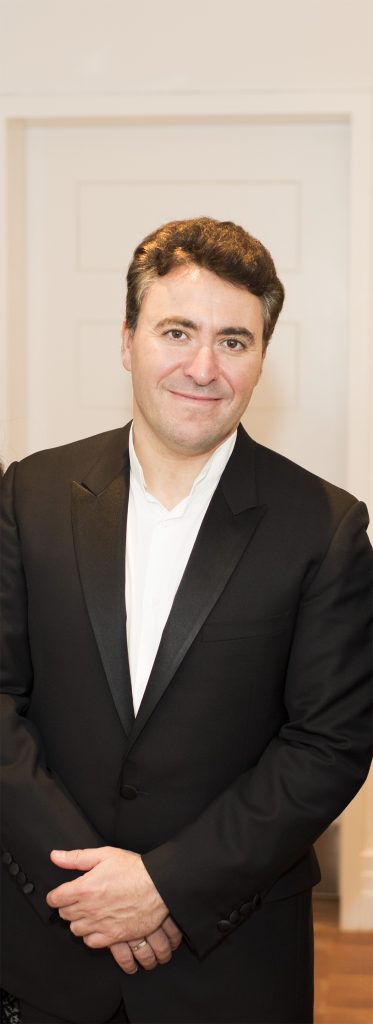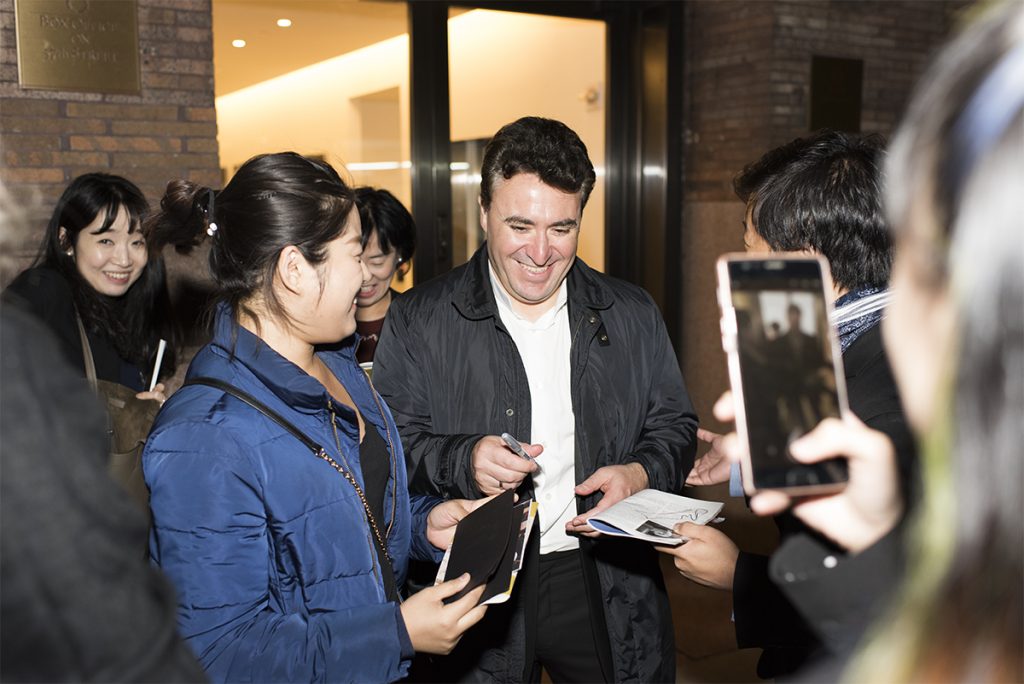By Tamami Honma and Julian Brown | Oct 2017
In October 2017, violinist Maxim Vengerov performed the Brahms Violin Concerto at Carnegie Hall with the Montreal Symphony conducted by Kent Nagano. After the performance, pianist Tamami Honma and violinist Julian Brown interviewed Maestro Vengerov to find out more about how he approaches each individual concert, his thoughts about how to make classical music more compelling to the internet generation, and his plans for the future, which include conducting opera and his commission of a new violin concerto by Qigang Chen.
Collaboration with Composer Qigang Chen
T: We know that you are going to Beijing very soon to give the world première of a new violin concerto by Chinese composer Qigang Chen. Can you explain how this collaboration with Chen came about and what your thoughts were in asking for this new work?
M: I heard for the first time Chen’s brilliant trumpet concerto played by Alison Balsom three years ago. Maestro Long Yu invited us all over to Shanghai to celebrate his anniversary and there I met Chen. I marvelled at what he wrote for the trumpet. I was particularly impressed by the division of harmony and orchestration, the use of the whole palette of colours in his composition. I then asked Chen to write a concerto for me. Co-commissioned by the Beijing Music Festival, the Melbourne Symphony Orchestra and the others, this new work for violin and orchestra will be performed at Beijing Music Festival in a week’s time. Chen really is a visionary. Inheriting the great French music traditions, he presents his inner world of imaginative colouring adorned delicately with Chinese music elements – a mélange of two nations, distinctively Qigang Chen.
T: You mentioned his orchestration; what do you find special there?
M: He creates what great composers so often do – a great illusion. While mixing different orchestral sections, brass, woodwind and strings with solo instruments, he establishes an illusion as to who was exactly playing what instrument. Chen studied with Messiaen and that explains a lot the origin of his style. This new concerto, La Joie de la Souffrance, or A Play of Suffering, embodies these ideas. It’s also a virtuoso work for the violinist. But it isn’t just an instrumental piece as the soloist is challenged to listen attentively and fuse one’s colouring with the orchestra.
J: I’m reminded of the way Joseph Joachim was deeply involved in advising Brahms on how to write some of the more virtuosic violin parts for the violin concerto. Have you gone through a similar sort of collaboration with Chen?
M: We have exchanged emails about the work and he sent me the violin part. After having studied the work, I decided that nothing should be dramatically changed in the violin part as everything can be performed. Besides, every note is part of one or another harmony; if one note is altered, the same harmony has to stay at the same place. Otherwise, the whole colour will change and interfere with the composer’s vision.
Joachim gave a lot of advice to Brahms as they were friends from childhood. But Brahms didn’t intend to write a violin piece that merely posed technical challenges for violinists because it was not a piece that would be performed like those written by violinists such as Paganini, Wieniawski or Ysaÿe, who knew exactly how to bring out the violin to its best. For Brahms’s Violin Concerto, you wouldn’t call it a violin piece even though it was perfect for it. The beauty of playing concertos by Brahms or Beethoven is that you don’t just play the violin but use it to connect to other instruments all together to express the composer’s message. For instance, while playing the first movement of Brahms’s concerto I sometimes have to imagine I’m a flautist or a clarinettist, or a horn player in the middle of the first movement and towards the end, after the cadenza. Rostropovich taught me to act as if in a state of communion, making connections to different instruments performing with me. Sometimes I forget that I’m playing the violin! One of the virtues of being a musician is to embrace all these colours to create a grand musical illusion. After all, music should not always be about reality but instead offer the audience the possibility of a voyage.
T: This is very interesting because we are told about this all the time as pianists but I’ve never actually heard people say to a violinist that they should emulate and think of other instruments as well. That’s interesting, thank you!
M: When I play duo recital, say a Kreisler piece, I can be as violinistic as possible and imagine Kreisler’s style with the pianist being a perfect accompanist. But for Beethoven’s violin sonatas I really have to forget the fact that I’m a violinist! These sonatas are written for the piano and violin, where the piano is the driving force, providing the structure and bass harmony, and the violinist should feel this way too.
On Musicianship
T: We were at your concert last night. You brought out an incredible amount of colour and drew in the audience extremely well with Brahms’s Violin Concerto. I felt like you were approaching classical repertoire like new music. How would you say you approach works that you perform, especially the famous ones like the Brahms?
M: I came from a very important tradition of music making. My mentor Rostropovich collaborated directly with the greatest composers including Shostakovich, Prokofiev, Britten, Walton, Dutilleux and many others. He always reminded me that no matter how well-known the work is, like those of Brahms or Tchaikovsky, I should treat it like a world première every time I perform it. It’s true because, especially with the greatest music, besides the composers’ scores, I could refer to various intellectual and spiritual aspects of the music to play in many different ways. But in cases of Brahms’s concertos, where the line of the soloist is well-integrated in the orchestra texture, it’s wrong to treat the orchestra as an accompaniment. After all, it also depends on the orchestra and the conductor.
Consistency vs Spontaneity
J: To what extent do you like to pre-plan things in what you play? Do you like to leave a certain amount of room for spontaneity at the last minute? I ask because different violinists seem to have different approaches. Heifetz, for example, was known to be incredibly consistent in his performances. In different versions of the Beethoven Violin Concerto recorded many years apart, for example, his sound and the way he approached the work seem very similar.
M: With some performers, the ones that are really, really brilliant, phenomenal instrumentalists like Heifetz, they are amazing musicians because of the way they structure the sound, the phrasing, the beauty of the tone, and the colouring. But, not being negative, if you listen to Heifetz play Mozart you’ll hear Heifetz. If you listen to a Beethoven violin sonata or Bach’s Chaconne you’ll just want to hear Heifetz – whatever he did was amazing. It’s so brilliant that the music really didn’t matter! Also, there are a number of pianists and other instrumentalists for whom you don’t particularly worry about their interpretation – it’s secondary; mostly you like to enjoy them as their own performers. We like Kreisler, his amazing style, which was unique. No one can imitate that.
But there are performers like Rostropovich whose approach was that a musician should be secondary to the music. The performer should try to be the composer while working with the score and audience should not “recognise” the musician at all. So, in a recital consisting of two different works, say beginning with Mozart’s followed by Brahms’s, that means, ideally, there should be four different performers, including the pianists!
So, with the Brahms Violin Concerto, as I mentioned, my performance yesterday felt like a world première for me. My precondition for working on the concerto was that I’d need to know every note, not only the violin part but also the orchestral part. With my conducting experience, I was lucky that I knew how the orchestra and the violin soloist should work together. But I also needed a conductor to be there to create the right balance together. What would be the right balance for the Brahms Violin Concerto? This cannot be pre-planned. The right balance was created for this concert hall. If I was in another concert hall, there would be another “right balance” as acoustics differ. The interpretation could change because you might feel differently for one phrase or another or because of contrapuntal elements that overlay between instruments. In fact, how the soloist plays will largely determine how the orchestra will accomplish the counterpoints. It’s a very complex process but it allows everyone to be involved, like chamber music, and just like the Brahms I performed with Maestro Nagano.
On Eugene Onegin
T: I heard you have an upcoming conducting role for Eugene Onegin.
M: Yes. It will be my first time with opera in Moscow.
T: That’s fantastic! How involved are you in shaping the production?
M: I’ll just come in for some rehearsals and a performance. The production has been running for a couple of years and the orchestration will remain the same. I’ll try bringing my vision, passion and interpretation to the musical part.
T: Having grown up in Moscow, you must be very familiar with the Pushkin work.
M: Yes, absolutely. I’ve read Onegin many times. With so much information about it available, we can interpret the texts from multiple perspectives. But, for me, we keep to Pushkin’s original texts. Moreover, Tchaikovsky had his own vision. Sometimes, depending how music was written, there’s room for different interpretations. You need to study the literature in depth, while evaluating what is happening at the moment together with the production and the orchestra.
J: Last night, you played an encore from Massenet’s Massenet’s Méditation from his opera Thaïs. Would you have any plans to perform the whole opera while also playing the solo?
M: Lately, I fell in love with French music, especially works from the end of the 19th to the early 20th century. I’m currently working on Ravel’s sonata and a sonata by Ernest John Moeran. I’d be open to doing Massenet’s whole opera because it’s remarkable.
J: What was the drive behind your interest in conducting opera?
M: Tchaikovsky’s Eugene Onegin marked my first attempt in opera. In music, I’m full of curiosity – I want to learn much more beyond my violin repertoire. When I was 22 years old, I was attracted by the sound of early music and so I learnt to play the baroque violin. That gave me valuable insight into how to perform Bach’s pieces, not just on the baroque violin but on ordinary instruments. In fact, I can now incorporate baroque colouring well into my playing using a Strad. Similarly, I took on the viola not because I wanted to become a professional violist, focusing equally on violin and viola. Rather, I simply loved the work by Walton and I recorded his viola concerto together with Britten’s Violin Concerto with Rostropovich. I then started teaching and eventually conducting. All of these have contributed to me as a violinist.
Violin playing will always be the core of my life. It’s difficult to focus at the same time on symphonies, operas, violin recitals and orchestral performance as a soloist as well as teaching! What is more important is the journey as a musician. In the future, I may decide on anything that I feel passionate about. Thus, I’d not say no to an opportunity to conduct opera. It’s a new thing for me and I’m certain that I’ll have a different perspective when I perform Tchaikovsky’s Violin Concerto again.
On Performing Bach
J: You mention your interest in baroque violin. I’m intrigued by how you approach a work like Bach’s Chaconne, which has lots of polyphonic textures where Bach simply wrote chords but didn’t exactly describe how they should be articulated. Different violinists have very different ideas on how to deal with these passages. What do you think about this particular problem?
M: To be frank, I’ve yet to play in public all of Bach’s six sonatas and partitas. I’ve told my students they are challenging because I’m not a composer. It’s my belief that with Bach one needs at least a good understanding of how to write a fugue before being able to do great justice to Bach’s music. Any yet, when you watch Rostropovich’s masterclasses, he performed Bach fugues on the cello. However, unlike the piano or organ, the cello is not a complete (polyphonic) instrument and thus the fugue wouldn’t sound exactly the same on a cello; you have to “imagine” the missing voices. It’s easy for him because he studied composition with Prokofiev and instrumentation with Shostakovich. That said, I’d love to perform Bach and I could perhaps give you a good performance. But I’d need, at some time in my life, to start composing, for practical reasons I just mentioned.
J: You said you don’t compose but you did compose your own cadenzas such as the one you played by Brahms last night and the ones you use for the Beethoven Violin Concerto. Am I correct?
M: Yes. I used my own cadenzas. Of course, I’ve a basic knowledge of composition as I studied harmony, music theory and instrumentation. I wrote a fugal choral when I was around the age of 16. After all these years, my basic knowledge should be reinforced but I need to revisit all that. Speaking about my predecessors, I always feel very humble. Take George Enescu, for instance. He was not only a brilliant violinist but also a celebrated pianist. He started conducting when he was at the age of 40 and five years after that he was a candidate for New York Philharmonic’s chief. You can appreciate his level of knowledge and ability. But above all he was a remarkable composer. His violin sonatas, chamber works and symphonies are incredible. Especially the third symphony, you can really put it alongside Mahler’s. He was also an extraordinary teacher, inspiring many genius violinists, such as Menuhin, Grumiaux, Ida Haendel and others.
From composers/instrumentalists like Enescu, Rachmaninoff or Myaskovsky, we learn that there is always room to grow and the sky is the limit. I was very lucky. I started my musical education very early and that’s why I’ve been able to experience so many things. But there are still new things for me to continue my expedition.
On Rostropovich
T: You studied with Rostropovich on an one-on-one basis. Could you share with us any specific examples of things that influenced you?
M: I met Rostropovich for the first time at Avignon Festival in France. It was an introduction through Teldec, my record company at that time, which is now part of Warner Music Group. He was a maestro who had known and befriended Shostakovich and Prokofiev. To me he was a musical god. But I wasn’t sure how I should start the conversation. Should I say, “Maestro, good morning!” or should I just keep silent? Anyway, when I arrived at his doorstep he opened the door, hugged me dearly and said, “I’m so sorry but I’ve to feed my dogs.” Then I saw these two little dogs, looking more like rats, making so much noise!
They looked very hungry so he opened a can of dog food and started feeding his “babies”. He said, “It look so delicious I could be eating this!” So, he was humble in a way that he put himself on the same level as the people he was meeting with, not above. When he was teaching, he was like a senior colleague or elder brother; on stage, he’d offer me extensive compliments and support. He was, indirectly, leading me while opening new doors for me in music. The precious time I spent with him enlightened my life: it will never be forgotten and will stay for the rest of my life.
Working with Pianists
J: How do you choose your pianists when you are doing violin and piano repertoire?
M: For me, it’s important to stay with the people I’m familiar with – it’s a bit like creating my own quartet. Of course, there are many wonderful people who would get together and rehearse in a short period to give marvellous performances. But I really want to build a duo that “breathes” together in all musical occasions. Consistency is what it needs. From that perspective, I work very often with three renowned pianists: Vag Papian and Roustem Saïtkoulov from Paris, and in 2018 I’m going to give quite a few performances with a wonderful Russian pianist Polina Osetinskaya.
On Recording
T: You are still doing many live performances. How about recordings?
M: Live experience is indispensable, there is no doubt about that. But sometimes, it’s more important to record in studios. If you can make a studio recording sound as vivid as live, then it’s quite an achievement. I remember my first LP recording with Melodia when I was 10 years old. I spent three full days to record a one-hour programme with a producer. Emerging from the studio and playing in a concert in Moscow, I was a different violinist, not just technically; my sound production and musical interpretation were also suddenly more mature! In the studio, I’d a chance to listen to my edited recordings, figuring out how to improve the sound of my violin. Later, as I brought this experience I acquired in the studio to the concert hall, my performances became more focused, energetic and passionate! I’ve recorded with different record companies and wonderful people in studios and I’ve evolved as a musician. The value of studio recording lies not only in creating a clinically clean product but also making it come alive – so that every time you listen you could discover something new.
Messages for Young Musicians
T: Would you have any advice or messages you’d like to deliver to the young people who are currently learning string instruments?
M: Yes, the message is not just to young kids but also to their parents and adults who play the instrument! I’m now a father of two young girls, Polina and Elizabeth, named after Tchaikovsky’s duet from Pique Dame (the opera Queen of Spades). They have been learning to play the piano and the cello for more than a year and they love it! Now their concentration has improved, vitality is enhanced and they have become more disciplined and creative while having so much fun with music. Music is making a positive impact on their lives and it doesn’t matter whether they become professionals or not. I just think it’s so important for kids to learn musical instruments!
I became a professional due to special circumstances – my parents were musicians; my mother was a choir conductor and my father was an orchestral oboist. Today, kids have incredible choices to become what they’d like to be but I think music provides the basic foundation, development of creativity and their awareness of their body and mind. Life is a play – when I go on stage I feel like I’m a child. Even today, I feel the same.
On Popularising Classical Music
T: We recently interviewed my former teacher, pianist Byron Janis, who studied with Horowitz. He suggested that in order to make concerts more popular, first of all, let’s stop calling them “classical”.
M: “Classical music” has somehow become negative – the word is not great anymore.
T: That word itself is a killer.
M: Absolute killer.
T: He suggested one way to bring back the former glory was maybe in the second half of the concert having the soloist improvise – let the audience offer a few starting notes and the soloist will continue.
M: If I had a magic wand and I could be granted extra abilities as a musician, my first wish would definitely be composition. I’ve no time for the moment, but let me acquire the knowledge to compose; and if I could have a second wish, it would be to be able to improvise. To me, composition and improvisation should be integrated into a musician’s primary studies. When I came to Moscow, at the age of seven, I could play Mendelssohn’s violin concerto and, a year later, Lalo’s Symphonie Espagnole. However, I missed out on composing and improvising. Sometimes when I was at home, though, if I had one hour or so, I’d just play spontaneously. That freedom is important, we should not lose it.
T: How would you recommend that other people try to re-popularise this kind of music back into mainstream as we are competing with so many other genres of music?
M: I think one needs not to popularise classical music – the word “popularise” does not sound as if there is much passion. At the end of the day, the best music will survive – it doesn’t matter what name it has, classical or pop. In rock and pop, there is also wonderful music and less good music – that goes for classical as well. But fans of Bach, Mozart, Tchaikovsky and Ravel will always be there. It does take time for people to appreciate the level of complexity in music such as Shostakovich symphonies or works by Mahler as these demand a certain degree of concentration. Unfortunately, generally speaking, the concentration period of young people is short. For example, a survey recently found that on average people spend no longer than 20 seconds on each internet page! How do you expect them to listen to Bruckner’s symphony, which last for more than an hour? It’s almost impossible. But then, we have to ask ourselves: what are our values, where are we heading to, do we want to become slaves to something or do we want music to perhaps serve a more meaningful purpose? For instance, we could turn to the therapeutic power of music. During a concert, it’s the time for us to go offline for two hours, switch off our mobile phones, be without email or internet and set our souls free. We have to care for our body and emotional state. Time will come when humanity will appreciate all of this.
Don’t get me wrong, though, I think it’s amazing what internet has already done for humanity, how it has affected our lives and its capability to bring value to the whole world. But, as with every good thing, some other things such as music may be devalued.
Nowadays, it’s expected by the majority of the population that when you come to a concert you have to watch the performance and not just listen. We want to watch how the soloist interacts with the conductor in a recital. It would be better if there were screens to assist us to “visualising” the music. Having said that, today, everything becomes too visual and that turns out to be a big problem, in my opinion. Often, the performer is judged more on how he or she looks, what he wears, how he goes on stage, how he presents himself, his image, his website and even internet popularity – but what do all these have to do with music? Would you imagine Rachmaninoff or Horowitz have time to write their blogs, given that they had to play the piano, compose, conduct and meet different people? I think at some point we have to go back to basics and examine what can we learn from the past. How can we recover these qualities? At least, it’s with music that we, as musicians, can really make a difference. But yet, our “club” is very exclusive – we must include more people and affect them in positive ways with this “virus” of music by offering something of great humanistic value to society.
Vengerov will return to North America in 2018 to give recitals at the Kennedy Center in Washington, DC, and other cities in the US.
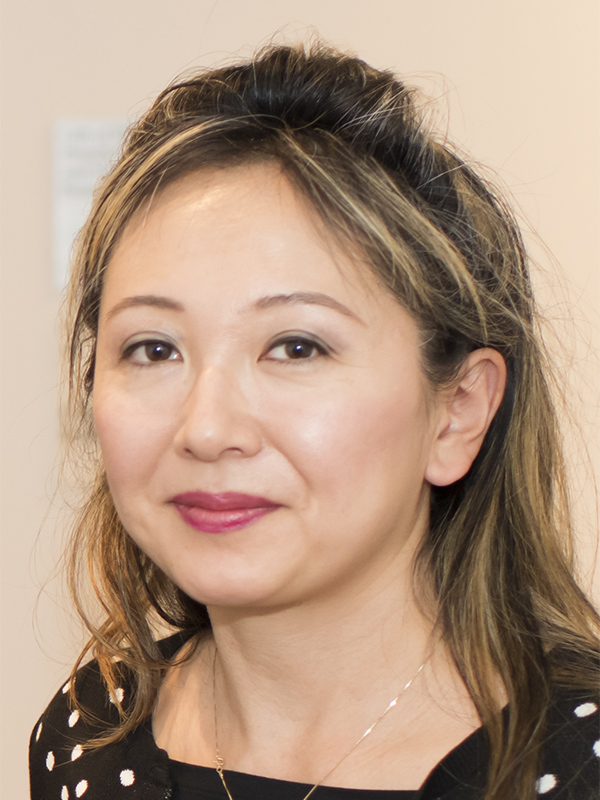
Tamami Honma is US correspondent for Vantage and an internationally acclaimed concert pianist based in Saratoga, California. Vantage thanks Ms Honma for making the interviews with Maxim Vengerov possible. Ms Honma received her undergraduate degree and performance MMus at the Manhattan School of Music in New York, and an honorary ARAM from the Royal Academy of Music; she was a lecturer as a member of their academic faculty for a number of years before moving to the US, where she now works as vocal coach at the San Francisco Conservatory of Music as well as maintaining a full concert schedule. For more information see https://www.tamamihonma.com.
Julian Brown is a writer and violinist based in Mountain View, California. Born in the UK, he lived for many years in London and has performed in both London and the San Francisco Bay Area. He and Tamami are co-founders of the Cal Arte Ensemble, which performs over 30 chamber concerts a year in the Bay Area, aiming to make great music available to a wider audience. He is also concertmaster of three orchestras including the Cambrian Symphony and the Palo Alto Philharmonic. For more information see https://www.julianrbrown.com.
